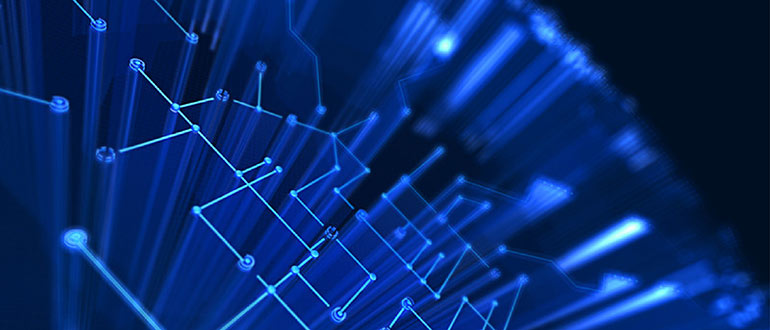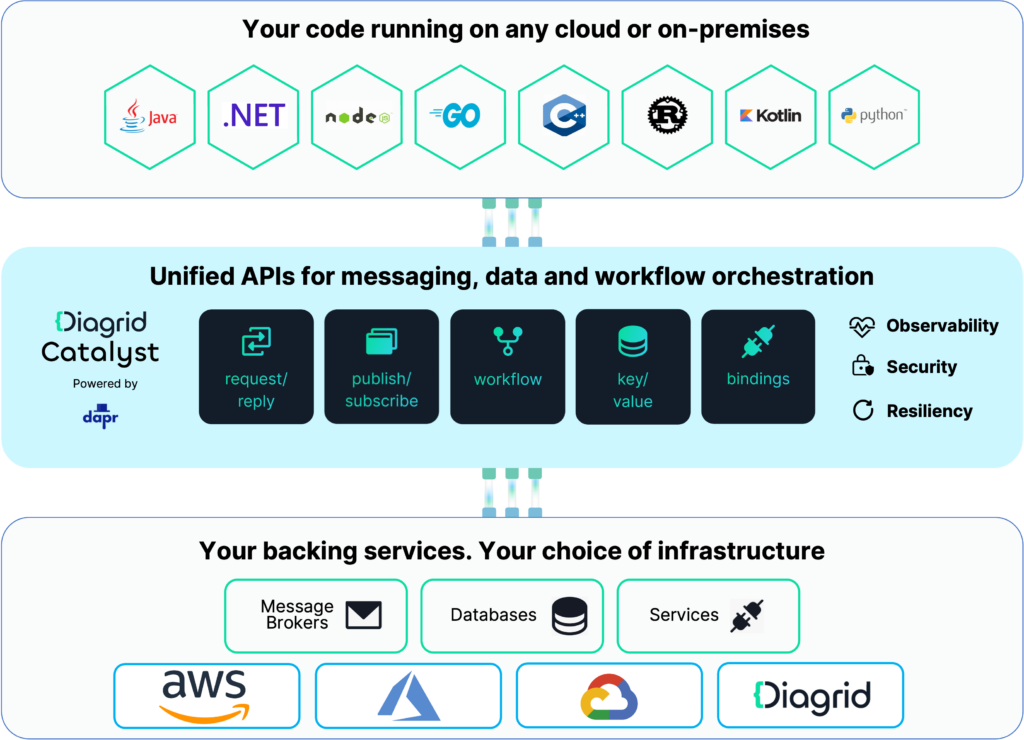At the KubeCon + CloudNativeCon conference this week, Diagrid launched a suite of Catalyst application programming interfaces (APIs) for the open source distributed Dapr runtime for cloud-native applications.
Dapr is written in the Go programming language and was originally developed by Microsoft; it is now being advanced under the auspices of the Cloud Native Computing Foundation (CNCF).
Diagrid CEO Mark Fussell said the suite of APIs addresses a wide range of functions that would otherwise require developers to write the same boilerplate code multiple times over.
Specifically, the APIs address workflow orchestration, request/response messaging, publish/subscribe messaging, connectors to message external systems, key/value state management, zero-trust security policies, reliability and fault tolerance in the form of circuit breakers, retries, timeouts and rate limiting, infrastructure-as-code (IaC) and serverless infrastructure.
The overall goal is to increase developer productivity by making available a standard set of APIs that can be used in any compute environment, said Fussell. That’s especially critical in Kubernetes environments where developers, as the silent majority of the cloud-native ecosystem, are finding it challenging to master low-level APIs to construct these types of services, noted Fussell.
These APIs, in conjunction with Dapr, will make it possible to significantly increase the pace at which cloud-native applications can be developed at a higher level of abstraction, he noted. In fact, the primary reason there are not more developers of applications for Kubernetes environments is that most of them prefer to create applications using tools that abstract away more of the underlying infrastructure, noted Fussell.
Dapr is being used today by more than 10,000 developers across over 6,000 organizations, according to the CNCF. Dapr is also already integrated with several other CNCF projects, including gRPC for internal communications, SPIFFE identities for access control lists (ACLs), telemetry data generated in an OpenTelemetry format, usage of Prometheus monitoring software to collect metrics, the ability to use CloudEvents as a publish and subscribe message format and, finally, an ability to natively run on Kubernetes using operator tools.
It’s not clear how much momentum Dapr has, but as more Kubernetes clusters are deployed across hybrid IT environments, it’s only a matter of time before developers build more distributed applications. As a common runtime capable of spanning those environments, Dapr presents IT teams with a way to build and deploy those applications so developers can more easily deploy.
Less clear within IT organizations is who will champion the adoption of a platform such as Dapr, but with the rise of platform engineering as a methodology for managing DevOps workflows at scale, it’s apparent more organizations are trying to centralize application development workflow management. There are, of course, multiple paths those teams might pursue to achieve that goal, but given the prevalence of Microsoft platforms in IT environments, a case can be made for a runtime that provides a framework that can be applied across both Linux and Windows platforms that have historically been managed in isolation from one another.




